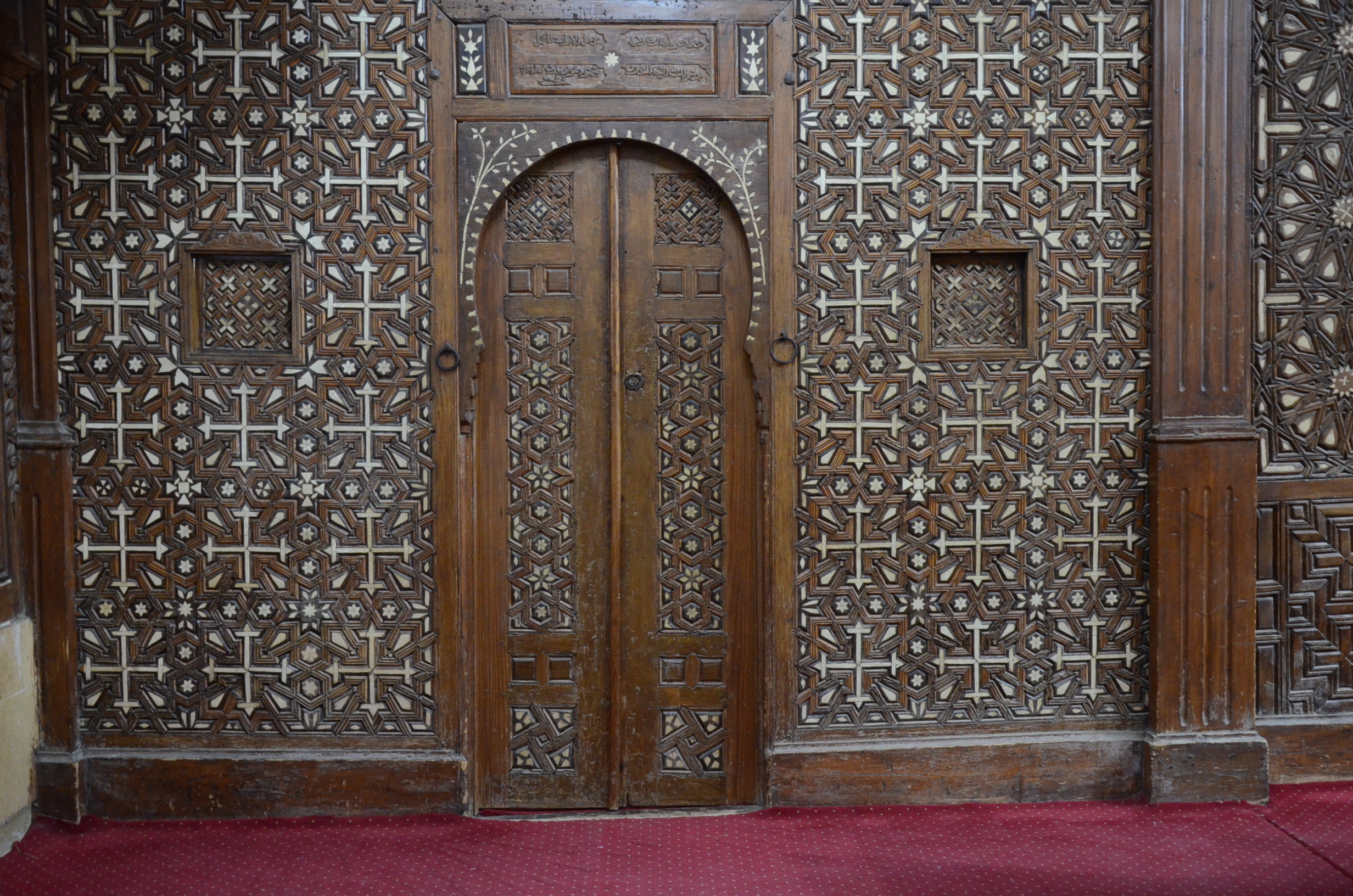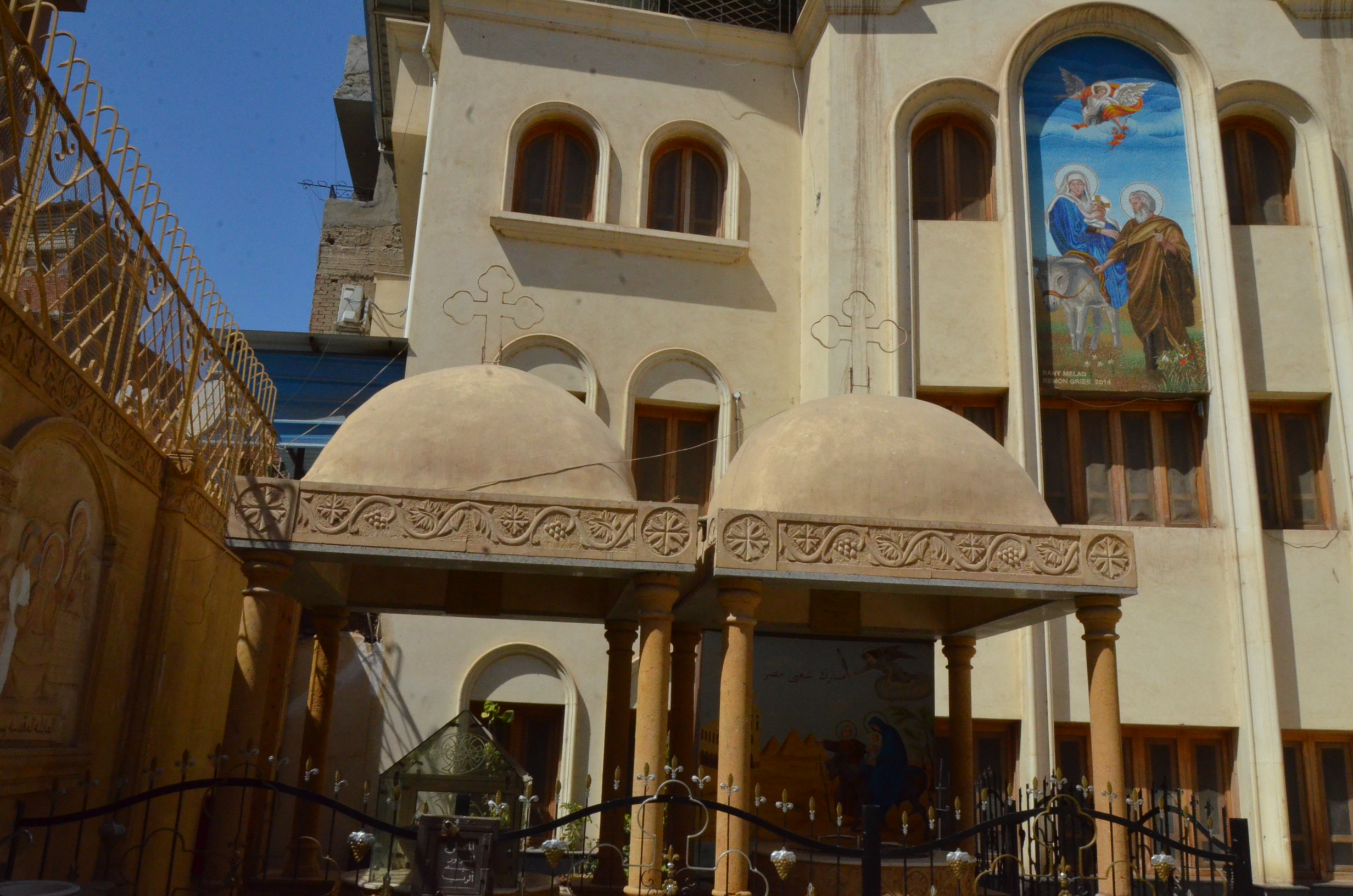In the place of residence of the Virgin Mary in Samanoud a church was built and it remained standing for centuries until it was demolished, and the current Church of the Virgin and St. Abanoub was built on its foundations, which is the only church in Samanoud nowadays (registered in Antiquities by the Ministerial Decree No. 309 of 2000 AD)
Samanoud was the seat of a Coptic episcopate. Abu al-Makarim mentioned in the 12th century AD that there were 5 churches there, one of which was called Zion (which was built on the site of the residence of the Holy Family in Samanoud) and it was big and great in building.
Because of the high increase in living costs which occurred in the year 1200 AD, the Christians were displaced and they took with them the body of the martyr Abanoub al-Nahisi (his commemoration is on 24th of Abib). They came to reside in Samanoud and they placed the martyr pure body in the church of Zion. Therefore, the church was called after by the name of The Virgin Mary and Saint Abanoub.
Five patriarchs of the See of St. Mark emerged from Samanoud:
1- Pope Yoannis III the 40th patriarch (7th century AD)
2- Pope Cosmas I the 44th patriarch (8th century AD)
3- Pope Mina I, the 47th patriarch (8th century AD)
4 – Pope Yoannis IV, the 48th patriarch (8th century AD)
5- Pope Cosmas II the 52nd patriarch (9th century AD)
Archaeological manuscripts and ancient icons were found dating back to centuries preceding the establishment of the current church in the name of Saint Abanoub. It was written on some manuscripts that they are endowment for the church of the Blessed Virgin Mary, the Pure and Immaculate, whose foundations are established in the Samanoud area.
Ali Pasha Mubarak mentioned in his book “The Conciliation Plans”: “In this town there is a church in the name of the Apostles and a church for the Copts in the Christian Quarter.”
The church was built in the Byzantine style with a central dome and around it some other domes. It relies on three longitudinal arcades extending from west to east, the middle of which is the most spacious. The arcades are supported by three marble columns, and semi-circular arches rest on them, which in turn carry the roof of the church. The northern, southern and western walls of the church end with circular arches and their lower half are overlaid with fine units of wood. The upper corridors, which were used for sitting women, precede these arches, and in turn overlook the side corridors.
There are three sanctuaries at the eastern side of the church, and in front of them an antique wooden veil decorated with crosses and inlaid with ivory.
As for the iconostasis in the Church of the Martyr Abanoub, it is an archaeological veil that is more than 300 years old.
The church preserves a large collection of ancient icons, 44 archaeological icons, including 22 icons in the vicinity of the church and 22 icons hanging on the ancient icon holder in the church.
The church that exists currently was built on the ruins of the old church, which was subjected to drowning during the flood. The worshipers at that time were facing difficulty in prayer due to the flooding of the church with water. With the renovation of the church, the current building was erected over the old building, which lasted hundreds of years, until the current building was built in 1841 AD. Parts of the icon holder were assembled from a number of old churches, and it was carefully restored under the supervision of the Ministry of Antiquities.













